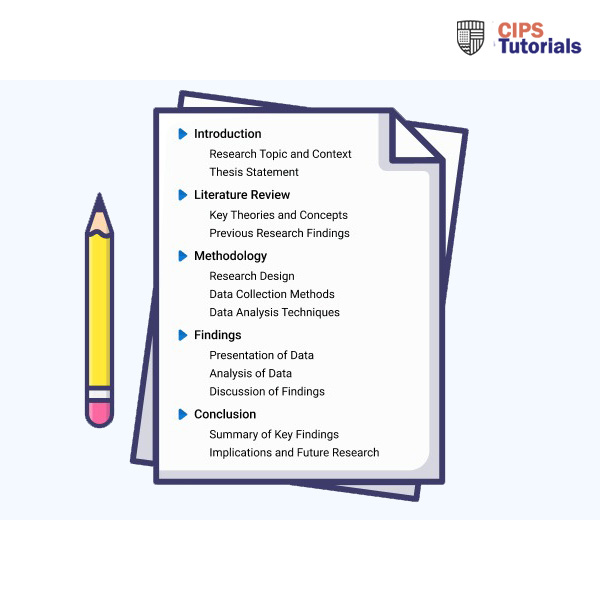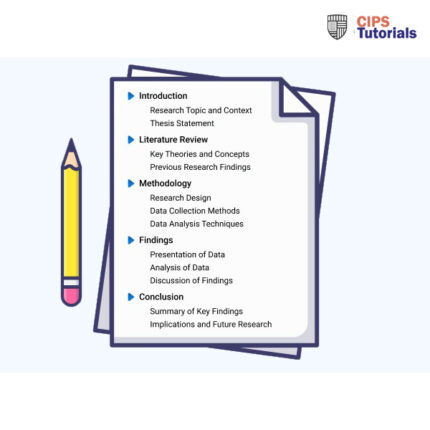-67%
Solution
SECTION ONE – QUESTIONS
| Analyse the external factors that drive the need for leadership and management within the organisation (AC 1.1)
Short references should be added into your narrative below. Please remember to only list your long references in the reference box provided at the end of this section. Word count: Approximately 430 words |
| · Leadership Definition:
Involves understanding the motivations of others and capitalising on them in order to accomplish a shared objective. It encompasses self-awareness, influencing stakeholders, and defining outcomes. Having a clear sense of purpose is crucial, as individuals tend to find more meaning in their work and are more likely to perform at their best when they have a shared sense of purpose (CIPD Factsheet, 2023). · Leadership Importance: It sets the organisation’s direction, motivates team, supports problem-solving, fosters open communication, and focuses on goals. It enhances employee morale, productivity, and retention by recruiting capable leaders and fostering a positive company culture (Boyles, 2023). · Management Definition: A concept that focused on hierarchical management, strategic planning, and top-down implementation. It highlighted the distinction between managing tasks and managing people, underscoring the significance of effective leadership in accomplishing goals (CIPD Factsheet, 2023). · Management Importance: It helps in planning team actions, setting goals, organizing teams, utilizing resources, ensuring accountability, enhancing staffing, prioritizing work, facilitating communication, maintaining momentum, and providing stability for employees (indeed, 2023). · The following Three External factors, will help in shaping the leadership and management priorities within Highgate Opticals, identified by using PESTLE methodology: · Digital Technologies (Technological): o Advantages: Technology is revolutionizing leadership, enhancing efficiency, and unlocking opportunities. Staying updated on trends like AI, automation, and digital platforms is crucial for leaders to stay competitive (Bickerstaff, 2024). o Disadvantages: Adapting to change can be quite challenging, as it necessitates an ongoing readiness to learn and be flexible (Bickerstaff, 2024). o The integration of technological advances and improvements with effective leadership and management will enable Highgate Opticals to enhance its innovations and achieve greater success (Bickerstaff, 2024). · Diversity and Inclusion (Sociocultural): o Advantages: The integration of social values into the organization’s culture will enhance leadership and management relationships with employees, customers, and the community, thereby fostering positive reputational impact (Bickerstaff, 2024). o Disadvantages: Leadership and management should stay informed about the ongoing changes in social and cultural trends that could impact Highgate Opticals’ strategies (Bickerstaff, 2024). o Diversity, Equity, and Inclusion is promoted through policies, HR collaboration, diversity training, and inclusive behaviours, boosting employee morale, productivity, and talent attraction (Dell’Aquila, 2024) · Environmental sustainability (Environmental): o Advantages: will offer fresh business prospects. Embracing sustainability practices can boost the organisation’s image and attract stakeholders who prioritise the environment (Bickerstaff, 2024). o Disadvantages: Managing environmental demands and trends is a substantial financial investment that may increase in the future due to potential legal complications and additional changes, thereby exacerbating overall expenditures. o Sustainable HRM strategies, such as “common good HRM,” socially responsible HRM, ecological HRM, and triple bottom-line HRM, are crucial for reducing carbon emissions and environmental impact in the future of work (CIPD, 2021). |
| Explain the key differences between leadership and management roles and styles and the implications of each for organisational effectiveness. (AC 1.2)
Short references should be added into your narrative below. Please remember to only list your long references in the reference box provided at the end of this section. Word count: Approximately 480 words |
|||||||||
| · Leadership motivates groups to accomplish objectives, whereas managers devise plans to accomplish those objectives. Despite their similarities, there are significant distinctions to bear in mind (Eads, 2023).
· Management as authority and control: Traditional management methods often fail to motivate workers to achieve organizational goals due to neglecting physiological, safety, social, egoistic, and self-fulfilment needs. Management alone cannot fulfil self-respect, respect from colleagues, or personal fulfilment. The primary responsibility of management is to create an environment and strategies that empower individuals to pursue their objectives while aligning with the organization’s goals. Control is not a comprehensive tool, but a valuable tool for motivating and facilitating growth (Holmer, 2023).
· Leadership as vision and influence: Leadership is a skill that can be enhanced through focused effort. Authentic leaders are honest, transparent, and true to themselves, fostering trust and respect. They are visionary, empathetic, and connect with their workforce, promoting inclusivity and openness. Empowerment and trust are crucial, giving employees ownership over their tasks. Inspirational leadership involves continuous growth, learning, and adaptation, setting the tone for the organization’s culture and values. Effective leaders foster a workplace culture built on trust and respect, showing genuine empathy, and understanding, which greatly influences their teams. (Spence, 2024).
· Some Key differences between leadership and management roles (Gavin, 2019):
· leadership and management styles: o Servant leadership: a management style that prioritizes team growth and well-being, especially in nonprofit organizations. It involves principles like listening, empathy, healing, self-awareness, persuasion, and community building. Effective servant leaders guide team members, value perspectives, and encourage collaboration, fostering a strong work culture (Indeed, 2023). o Impact on Organisation: (Tenney, 2024) § Influences employee performance, commitment, and trust. § Prioritizes relationships, reduces work stress. § Fosters intrinsic motivation through autonomy, mastery, and purpose. § Emphasizes self-determined motivation and employee development. § Promotes psychological safety, fostering innovation and retention. § Builds trust and authentic connections through emotional intelligence, self-awareness, compassion, honesty, and transparency. o Trait theory: Identifies personality qualities associated with successful leadership, suggesting that certain natural features can help individuals become more effective in leadership roles. It uses personality assessments to predict the likelihood of success in a potential leader, and if a leader exhibits these traits, they can receive training to maximize their leadership potential (Indeed, 2022). o Impact on Organisation: (indeed, 2022) § Adaptability to external factors and reflect on their plan. § Inspire individuals to do their best. § Encourage creativity and solution identification. § Positively affecting the morals and trust of individuals § Ensure achieving targets through decisiveness and stability.
|
| Compare the different knowledge, skills and behaviours required for leadership and management in organisations. (AC 1.3)
Short references should be added into your narrative below. Please remember to only list your long references in the reference box provided at the end of this section. Word count: Approximately 400 words |
| · Kotter theory highlights the confusion between management and leadership within an organization. Misusing the terms can hinder success. Management involves planning, budgeting, and problem-solving, while effective leadership guides growth and opportunities. Both are essential, but management is based on personal qualities. In today’s fast-paced world, leadership is crucial for individuals at all levels. Misusing management with leadership can lead to unfavourable outcomes (Fawthrop, 2024)
· Skills for Leadership and Management: o Interpersonal skills essential for organizational leaders to establish strong relationships with employees, comprehend managers’ needs, and communicate effectively with external clients such as customers, vendors, and donors (indeed, 2022) o Problem-solving skills Will enable leaders to address issues beyond their management abilities, such as oil prices or supply chain issues in an energy corporation (indeed, 2022)
o Similarity: § Important for effective communication § Essential for teamwork and collaboration § Facilitates the identification and analysis of issues § Generation of solutions. o Differences: § Problem-solving abilities study complicated situations, whereas interpersonal skills analyse relationships, emotions, and communication dynamics. · Knowledge for Leadership and Management: o Technical Abilities Technical leadership involves a leader’s deep technical expertise, strategic planning, decision-making, and effective communication, enabling them to navigate complex technical challenges and demonstrate dedication (Norton, 2023) o Execution Abilities Effective execution skills encompass organization, motivation, and time management, which are utilized by managers and leaders to successfully accomplish tasks and achieve company objectives, such as meeting performance targets (Indeed, 2023) o Similarity: § Proficiency in both skills can be achieved through practice and continuous development. § Both skills are crucial for job performance and workplace effectiveness. § Successful outcomes. o Differences: § Involves specialized knowledge and skills in a specific field § Emphasizes effective application of skills to various tasks. · Behavioural for Leadership and Management: o Lead by example Maintain consistent standards for yourself and your team, work beyond regular hours, set realistic goals, and collaborate towards a shared goal. Understand team members’ unique needs to address their needs, boost motivation, and increase job satisfaction (Indeed, 2023). o Care of the individuals Understanding team members’ unique requirements is crucial for effective teamwork. Different individuals thrive in different work environments, and understanding their needs can lead to effective communication, increased motivation, and job satisfaction (Indeed, 2023). o Similarity: § Inspire, motivate, and guide. § Act as role models § Honesty, reliability, and sincere care o Differences: § Methodology & Style § Lead by example need to demonstrate the behaviours. § Caring focuses on the individuals’ emotions |
| Evaluate the different concepts and range of approaches that are available for effective leadership and management development. (AC 2.2)
Short references should be added into your narrative below. Please remember to only list your long references in the reference box provided at the end of this section. Word count: Approximately 500 words |
||||||||||||||||||
| · How people learn:
Memorizing information is inefficient and time-consuming, while active engagement, strategic learning, and sharing of knowledge enhance comprehension and future recall. Passive learning leads to limited knowledge expansion. Efficient learning principles include allocating attention, aligning purposes with course design, organizing information, engaging in active learning, varying studying locations, drawing representations, and anticipating future study and practice. (Princeton, 2024).
· Why People learn: Learning is an important process, promoting mental health and adaptability. It involves acquiring knowledge, skills, and competencies from childhood to adulthood, boosting confidence, unlocking new opportunities, excelling in development, and staying energetic. (Joshi, 2021).
· Recommendation: I advise Highgate Opticals to implement the Coaching and Mentoring approach from the list below, as it will significantly enhance the organization’s management and leadership.
|
| Discuss why diversity and inclusion should be an integral component of leadership and management development initiatives. (AC 2.3)
Short references should be added into your narrative below. Please remember to only list your long references in the reference box provided at the end of this section. Word count: Approximately 350 words |
Please click the following icon to access this assessment in full

